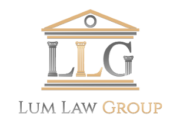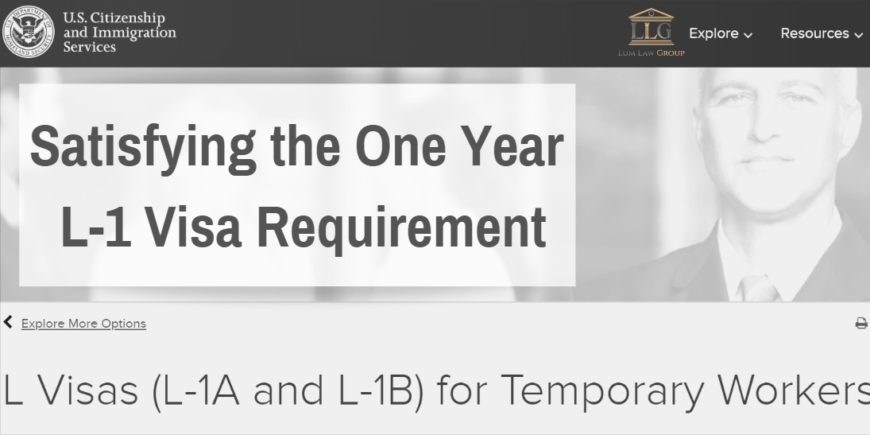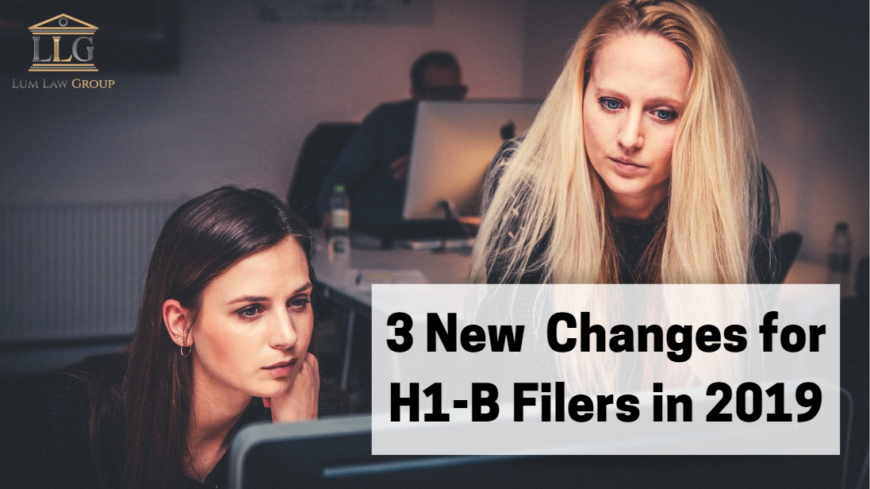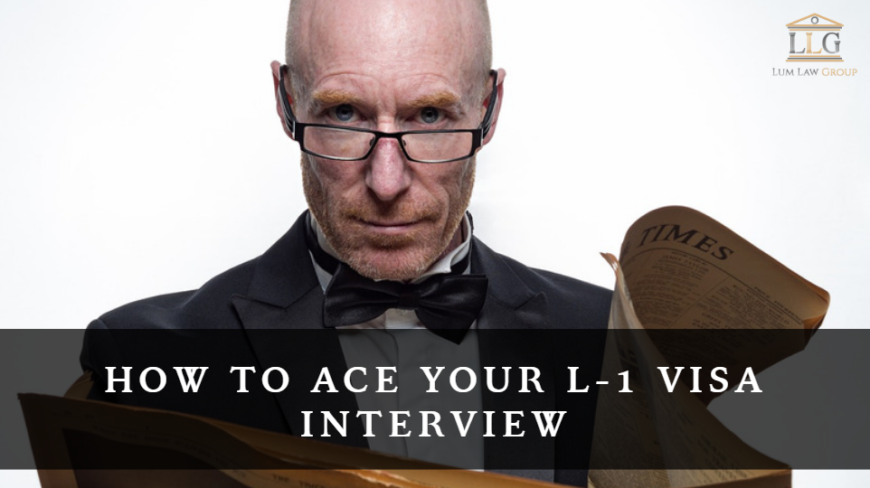Satisfying the One Year Abroad Requirement for L-1 Employment Visa
In November 2018, the United States Citizenship and Immigration Services (USCIS) issued a policy memorandum on satisfying the one year abroad requirement for L-1 visa beneficiaries. This policy memorandum is internal to the agency and cannot be used to justify a beneficiary’s qualification for L-1 visa (L-1A and L-1B Temporary Intracompany Transferee). Regardless, the policy does clarify many of the questions regarding the one year requirement. For your future reference, we have summarized the highlights of this recent announcement:
1. When does the one year period of employment abroad have to be met?
The one year work abroad minimum requirement has to be met on the day your petition is filed with USCIS.
For L-1, you are required to have worked for your company for a full year (365 days), continuously, within the last three years. There cannot be any gaps in employment. You must have worked outside of the United States. Any business trips your company sent you on to the United States do not count towards the 365-day rule. Your company cannot petition for you before you have met the 365-day requirement.
2. Do my U.S. business trips count towards my one year requirement?
No, they do not. If you have only been employed by your company for 365 days and you have made trips to the U.S, you do not meet the one year requirement. The reason is that the time spent in the U.S., even if for business, do not count towards your one year requirement. Business trips do not “break” your period of continuous employment abroad, but they do not add to it either.
For example, if today is February 1, 2019 and you began working for your company on February 1, 2018, but you took two trips to the U.S. in 2018: the first in July 2018 when you stayed for 14 days and the second in December 2018 when you stayed for 30 days. On February 1, 2019, you do not meet the one year abroad requirement. You will need to add the number of days you were in the United States to your total in order to calculate when you will meet this minimum requirement. In this example, you would add the following:
February 1, 2018-February 1, 2019 = 365 days + 14 days + 30 days = 409 days
February 1, 2018 + 409 days = March 17, 2019
In other words, your company can file your L-1 petition after March 17, 2019.
3. What if I currently have H1-B or E-2 visa status with my company but I used to work abroad for the same company?
If you currently have H1-B or E-2 visa status, you still have to meet the 365-day foreign employment requirement. However, your valid H1-B or E-2 temporary visa in the United States pushes back the “look back period” for foreign employment.
For example, if your company has obtained an H1-B visa for you for the past two years, from January 1, 2017 to January 1, 2019, but now your company would like to apply for your L-1 visa. The “look back period” is usually three years from the date of the petition. However, since you are working for the same company and in a qualifying capacity (executive, supervisor, or special skill employee), your “look back period” will end the day you obtained your H1-B visa. This means you will have had to accrue 365 days of foreign employment with your company from January 1, 2014 to January 1, 2017 instead of January 1, 2016 to January 1, 2019.
Please note that the H1-B or E-2 visa sponsor would have to be the same company as your L-1 sponsor.
4. What if my company sponsored my masters studies in the U.S. and now wants to sponsor my L-1 visa?
To meet the time qualifications for L-1 visa, you need to have 365 days of continuous foreign employment outside of the United States within the last three years. The three-year period, or “look back period”, is not affected by your studies in the U.S.
What this means is that if you expect to graduate from your U.S. masters program in May 2019 and your company decides to prepare and file your petition on or around May 2019, then you will have had to have worked for that same company in a foreign country for 365 days between May 2016 and May 2019. This period cannot include periods of time when you held a valid F-1 visa or were stationed in the U.S. It cannot include any “optional practical training” (OPT) that you completed with your company as the purpose of your stay as a F-1 visa recipient was to study, not work. Any period in which you held a valid F-1 visa and were located in the U.S. cannot count towards your 365-day employment requirement.
5. What if I entered the U.S. with an L-2 visa and now want to change status to L-1?
Similarly to an F-1 visa situation, an L-2 visa recipient enters the U.S. as a tag-along to the L-1 visa recipient it is attached to and thereby is not authorized to work in the U.S. This means that the three year “look back period” is not adjusted and your visa status is not exempt. You would have to have accrued 365 days of valid foreign employment with your current company within the last three years in order to qualify.
5. What if I stopped working for this company or worked for another company for a while?
If you stopped working for a period of time, or you worked for an unrelated employer within the three year “look back period”, it is possible you do not have enough time to meet the 365-day time accrued working abroad requirement.
For example, if you were working for your company from January 1, 2014 to December 31, 2016, but then worked for another company in the U.S. or somewhere else in between, and then maybe stopped working for a while before your company decided to recruit you for your present position, you need to carefully calculate the total number of days you have worked for this company. The three year look back period in March 2019 would extend until March 2016. Since you stopped working at the company in December 31, 2016, you would only have nine months of continuous employment within your look back period. Even though you have worked for your company abroad for over a year, you do not have enough days to meet the one year requirement for L-visa sponsorship.
6. What does “continuous employment” mean in this context?
Continuous employment with your company is defined as nonstop employment for the same company. This means that you cannot have worked for your company for 4 months in 2016, taken a few months break, and then worked another 8 months later in the year. It does not matter whether the 4 months and 8 months of employment add up to 12 months. It also does not matter if they took place during your three year “look back period”. Your 12 months of employment with your company must not have any gaps or breaks. You cannot work for an unrelated company in between and expect to add the time together for the one year requirement.
Please note that to meet this requirement you may have to produce proof. Evidence of continuous employment can include employment contracts, employment visas (if relevant), and pay stubs.
Do you have additional questions about the one year requirement for L-1 visa petitions? Schedule an appointment or give us a call today!



